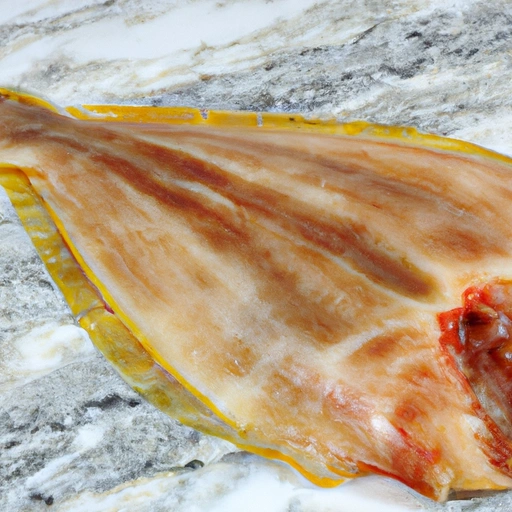Sole
Description

Sole is a flatfish belonging to the family Soleidae. It is a prized seafood ingredient known for its light, delicate flavor and fine, flaky texture. Sole is commonly found in European waters, particularly the North Atlantic, and is a favorite in many culinary traditions. Its versatility allows it to be prepared in various ways, making it a popular choice for chefs and home cooks alike. Sole is sold in various forms, including whole fish, fillets, and sometimes frozen.
Common uses
Sole is often used in dishes that require a mild, non-overpowering fish flavor. It is a common ingredient in stews, soups, and fish-based sauces. Sole can be eaten on its own, seasoned with a variety of spices, or used as a component in more complex recipes.
Nutritional value
Calories
A 3-ounce (85 grams) serving of cooked sole provides approximately 100 calories.
Protein
Sole is an excellent source of protein, offering about 20 grams per 3-ounce serving.
Fat
This fish is low in fat, with less than 2 grams per serving, most of which are healthy unsaturated fats.
Carbohydrates
Sole contains virtually no carbohydrates, making it an ideal choice for low-carb diets.
Vitamins
It is a good source of B vitamins, particularly vitamin B12 and niacin (B3).
Minerals
Sole provides essential minerals, including phosphorus, selenium, and iodine.
Health benefits
Consuming sole can contribute to heart health due to its low-fat content and the presence of omega-3 fatty acids. The high protein content supports muscle growth and repair, while B vitamins aid in energy metabolism. Selenium and iodine are crucial for thyroid function and antioxidant defense.
Potential risks
While sole is generally safe to eat, it's important to consider the source, as some fish may contain contaminants like mercury. Pregnant women and children should limit their intake of certain fish species to reduce the risk of mercury exposure.
Common recipes
Sole is featured in classic recipes like Sole Meunière, where it is lightly floured and pan-fried in butter. It is also used in fish and chips, seafood paella, and various baked fish dishes.
Cooking methods
Popular cooking methods for sole include baking, grilling, poaching, and pan-frying. It is known to cook quickly due to its thin fillets.
Pairing with other ingredients
Sole pairs well with citrus flavors like lemon, as well as fresh herbs, capers, and butter. It can also be complemented by white wines, such as Chardonnay or Sauvignon Blanc.
Summary
Sole is a widely enjoyed seafood ingredient notable for its mild flavor and nutritional benefits. It can be cooked using a variety of methods and fits into an array of international recipes. Sole offers a versatile profile that suits many different dietary needs and culinary preferences.